Controlled Impact Demonstration
On the morning of December 1, 1984, a remotely controlled Boeing
720 transport took off from Edwards Air Force Base,
made a left-hand departure and climbed to 2300 feet. It then began
a descent-to-landing to a specially prepared runway on the
east side of Rogers Dry Lake. Final approach was along the roughly
3.8-degree glideslope. The landing gear was left retracted.
Passing the decision height of 150 feet AGL, it was slightly to
the right of the desired path. Just above that decision point for the
pilot to execute a "go-around," there appeared to be enough altitude
to maneuver back to the centerline of the runway. Data
acquisition systems had been activated, and the aircraft was committed
to impact. It contacted the ground, left wing low. The
fire and smoke took over an hour to extinguish
Read more
about the test below photographs
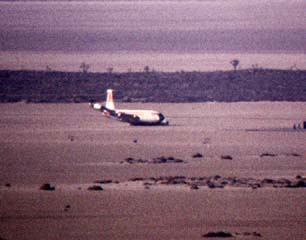
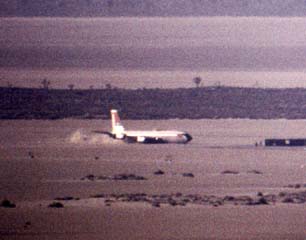
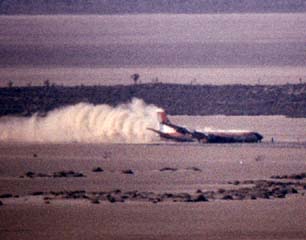
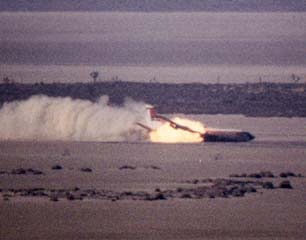
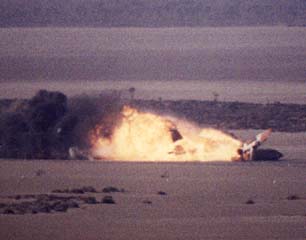
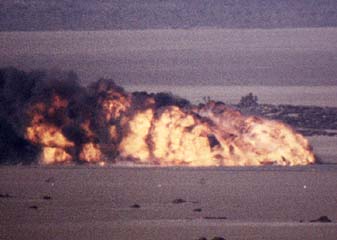
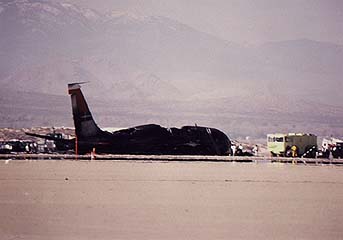

This flight, called the Controlled Impact Demonstration (CID),
was the culmination of more than a year's preparation in a joint
research project by NASA and the FAA to test the effectiveness
of anti-misting kerosene (AMK) in a so-called survivable
impact. Added to typical Jet A fuel, the AMK was designed to suppress
the fireball that can result from an impact in which the
airstream causes spilled fuel to vaporize into a mist.
The plane was also instrumented for a variety of other impact-survivability
experiments, including new seat designs, flight data
recorders, galley and stowage-bin attachments, cabin fire-proof
materials, and burn-resistant windows. Crash forces were
measured, and a full complement of instrumented crash test dummies
was carried on the flight.
The aircraft was remotely flown by NASA research pilot Fitz Fulton
from the NASA Dryden Remotely Controlled Vehicle
Facility. Previously, the 720 had been flown on 14 practice flights
with safety pilots onboard. During the 14 flights, there were
16 hours and 22 minutes of remotely-piloted-vehicle control, including
10 remotely piloted takeoffs, 69
remotely-piloted-vehicle controlled approaches, and 13 remotely-piloted-vehicle
landings on abort runway 25.
It was planned that the aircraft would land wings-level and exactly
on the centerline during the CID, thus allowing the fuselage
to remain intact as the wings got sliced open by eight posts cemented
into the runway. The Boeing 720 landed askew and
caused a cabin fire when burning fuel was able to enter the fuselage.
It was not exactly the impact that was hoped for, but research
from the CID program yielded new data on impact survivability
which helped establish new FAA rules regarding fire prevention
and retardant materials. Although proponents argued that
AMK prevented a hotter, more catastrophic fire during the CID,
FAA requirements for the additive were put on the back
burner.
Return to Aviation Page